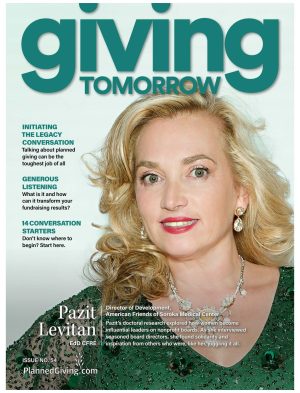Planned Giving Marketing Tools Do Not Close Planned Gifts.
[This was written in 2007; we were ahead of our time.]
I shop at Wal-Mart sometimes — there’s one around the corner. It’s not my hangout, but when I need some ordinary stuff, that’s where I go.
More often than not, my fellow shoppers have carts overflowing with gadgets. I wonder if all that stuff will ever get used, or will end up gathering dust in basements. Once you’re inside a superstore like Wal-Mart, it’s tempting to buy as many things as possible, whether you need them or not, because everything seems so cheap.
It’s like going back to the all-you-can-eat buffet for your seventh helping of cottage cheese, stuffing balls and pickled beets. You really don’t need more, but since you’ve already paid for it …
Today, fundraisers are faced with a battery of e-marketing tools. They are tempted to put their hands on everything they can get. “I can contact 2000 prospects with the push of a send key. And it’s cheap!” This is the antithesis of human-centered fundraising. And, it’s…
Not Quite that Cheap!
What they didn’t tell you are the costs after you press that send key, and that, in fact, it can be quite expensive. Consider lost opportunities when most of your e-mail blast gets deleted or spammed out, especially when it annoys some of your prospects (and it will). Read this post before you consider going this route.
Do the prospects want a barrage of contacts from you? Are any relevant messages that actually sound like your institution getting through? Who cares? You’re using up a package marketing deal that you’ve already paid for, so…
The “Human Moment” (or… the Human-Centered Fundraising Moment!)
“Don’t hide behind the tools.” There are certain things that a gadget can’t do well (like kissing your spouse). We know that planned giving websites will not close planned gifts. They can get the prospect in the mood, but gift closing requires human moments, a term coined by Edward M. Hallowell, psychiatrist and senior lecturer at Harvard Medical School.
Dr. Hallowell writes that the human moment is “an authentic psychological encounter that can happen only when two people share the same physical space. It has two prerequisites: people’s physical presence and their emotional and intellectual attention.”
It’s like needing to hug your spouse or kids: your well-being depends on it (theirs too). The human moment is a quality of interaction you don’t get from computers, emails, or even the phone.
Often the computer encourages superficial attention to streams of data, but talking face-to-face demands focused emotional and intellectual involvement that is uniquely satisfying.
“In-person contact stimulates an emotional reaction,” explains Lawrence Honig, a neurologist at Columbia-Presbyterian Eastside, a New York hospital. Bonding hormones are higher when people are face-to-face. Some claim face-to-face contact stimulates dopamine, the attention and pleasure neurotransmitter, and serotonin, the neurotransmitter that reduces fear and worry.
Working at the computer or talking on the phone for a long time is exhausting. The brain starts to crave rest from input overload and fuel from human contact.
(As the use of communication technology has risen, consultants have begun flying more… wonder why?)
This is as true in every day life as it is in nonprofit fundraising. That’s why human-centered fundraising is so important! Nonprofit fundraising relies on building and cultivating relationships. For the entire history of nonprofit development, we have focused on human-centered fundraising. And we can’t stop now, no matter how many online tools and AI-enabled technologies come to pass. It is more important than ever to focus on human-centered fundraising at your organization!
The “Why” (Human-Centered Fundraising) is More Important than the “How” (the Fundraising Technology We Use)
At my firm we believe that our products speak for themselves. Before they partner with us, however, we ask our prospects to understand our philosophy above (the “Why”). We want them to make a paradigm shift. If they don’t, we’ll be just another vendor instead of partner.
Our tools work to make your life simpler. Their development is based on research outcomes and facts, and part of that research is our first-hand observation of the day-to-day practices of planned giving officers individuals like yourself.
We put our experience to work to help you disseminate information and engage your prospects. We know what mailings produce results, when are the best months to mail, who you should target. We know what should be said on your website and why certain phrases compel prospects. We know why it’s important to keep planned giving plain and simple. We know where you should focus and how you will know that your program is working.
We deliver truly customized services, not a smorgasbord of products packaged as a “deal.” The result is carefully tailored to your needs so that you can close more gifts.
I love the world of planned giving. Read how I fell into it.
Category: Planned Giving Marketing






